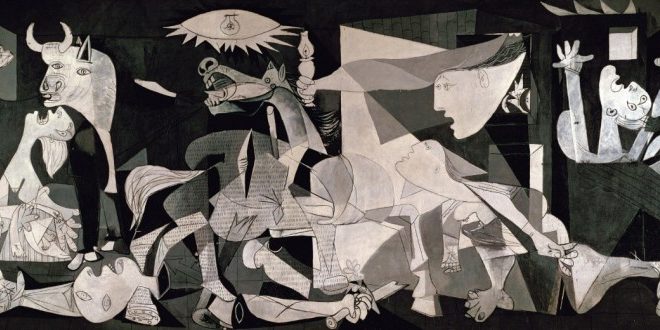
Neil Postman aptly described our society as a Technopoly, or what we could also refer to as technocracy – a society fundamentally shaped and ruled by technology. Technology has played a central role civilization from the beginning, but a shift has occurred as technology has passed beyond normal human proportions. Rather than assisting us to perform necessary human actions more efficiently, it has now engendered possibilities and power that exceed the ordinary limits of nature.
Human beings, as rational creatures, can apply intelligence to the natural world to create tools that enable us to shape and manipulate the natural environment more effectively. Tools are individual creations used to facilitate our work. Technology is a more systematic application of tools that shape human activity and life more broadly. God made us to be able to act as co-creators and even tasked us with subduing the earth and exercising dominion over it (though not domination).
When I voice concerns about technology, I often hear people respond emphatically that technology is neutral – simply a tool that can be used for good or ill. That may be true, but the invention of a tool and its systematic application are not neutral endeavors. The tool conditions its own use, shaping or enabling a particular action. More significantly, all things created by God have an intrinsic ordering toward him as their Origin and End–their purpose and goal. Human creations do not contain that same intrinsic ordering to God. A tree always bears the mark of its Creator and finds its purpose in glorifying him. We cannot say the same of a refrigerator, which was created for a limited and more utilitarian purpose. Technology depends upon human intentionality for its ordering and purpose.
Ultimately, technology is not neutral because its use requires human action, which itself is never neutral. If an action is freely chosen using our faculty of reason, then it must be good or evil based on the nature of the action. Aquinas relates this in the Summa: “Human action, which is called moral, takes its species from the object, in relation to the principle of human actions, which is the reason. Wherefore if the object of an action includes something in accord with the order of reason, it will be a good action according to its species” (ST I-II, q. 18, a. 8). Morally speaking, the use of technology constitutes a free choice, with its own particular object, intention, and circumstances, which render this choice either moral or immoral.
When we use technology, we must ask: “what am I choosing to do, why, and in what way?” The object of an action employing technology would be determined generally by the nature of the technology itself. I conform to it by choosing to perform the action enabled by the tool, for the purpose I intend. The claim that technology is intrinsically neutral, or morally indifferent, can be used as an excuse which creates passivity. This can allow technology to determine our action, rather than approaching it with clear deliberation and ordering it to its proper end: the true good of human life, which in turns is directed toward the glory of God. Technology is not good unless we use it well.
Furthermore, the Church teaches that technology is not neutral. In relation to biomedical technology, in particular, the Congregation for the Doctrine of the Faith asserted:
It would on the one hand be illusory to claim that scientific research and its applications are morally neutral; on the other hand one cannot derive criteria for guidance from mere technical efficiency, from research’s possible usefulness to some at the expense of others, or, worse still, from prevailing ideologies. Thus science and technology require, for their own intrinsic meaning, an unconditional respect for the fundamental criteria of the moral law: that is to say, they must be at the service of the human person, of his inalienable rights and his true and integral good according to the design and will of God
Donum Vitae, signed by Josef Cardinal Ratzinger, Feb. 22, 1987, par. 2.
Pope Francis strongly repeated this principle:
We have to accept that technological products are not neutral, for they create a framework which ends up conditioning lifestyles and shaping social possibilities along the lines dictated by the interests of certain powerful groups. Decisions which may seem purely instrumental are in reality decisions about the kind of society we want to build.
Laudato Si’, par. 107.
Francis’ insight reaches further to the use of technology to shape and control human behavior. We have moved beyond the realm of technology as a tool. It forms an artificial environment and its use draws us into a web (if you will) of possibilities, conditions, demands, and restraints. It also subordinates us to a network of political, social, and economic controls and influences of large and increasingly domineering groups. To use technology rightly, in a human fashion, it must become a tool once again. We must withdraw ourselves from the technology that would make us into a tool of the new technocratic paradigm of an inhuman culture.
The Voice of Art: Picasso’s Guernica
Although I find most of modern art disturbing, including the works of Picasso, there are, nonetheless, distinctively modern experiences and emotions that modern art captures quite adequately. Picasso’s Guernica is one example, with his formlessness demonstrating technology’s power to strike at the core of person, dismembering not only the individual but the community and our relationship with nature. It depicts the bombing of the Basque town Guernica by Germany and Italy to support Franco in 1937. This large oil painting, twenty-five and a half feet long, finds a way of expressing the terror and inhumanity brought by modern warfare, one of the most barbaric applications of technology.

The grotesqueness of Picasso’s cubism fits the dehumanization of the scene. Violence has always plagued humanity–from the very beginning–but modern technology permits a greater degree of disfigurement of form as human beings become subject to a new degree of power over nature. The black and white tones add to the lifelessness; and the absence of ideal beauty, so characteristic of modern art, further portrays the terror that cannot be controlled.
To me, the painting reflects helplessness in front of the modern world’s stripping of humanity down to material pieces as it swallows it in fire (see figure to the right). The light bulb eye, in particular, inspires fear–an artificial sun that witnesses the destruction, contrasted with the candle held by a human witness. This technological eye hints at a new truth and power, which will become even more terrorizing and destructive with the rise of nuclear weapons. We also see the crucial role of media to capture and shape human life with the newspaper script used in the painting.
Picasso undoubtedly encapsulates the horrors of war, but does he also portray the affects of modern technology on human life more generally? Insofar as he expresses human helplessness and confusion before the dark forces that threaten the integrity of nature and life, I think the we should answer in the affirmative. Picasso, perhaps unwittingly, captures the struggle we face to preserve humanity from the forces we ourselves have unleashed that blind us and threaten to consume us.
Originally published: https://buildingcatholicculture.com/why-technology-certainly-is-not-neutral/
The post Why Technology Certainly Is Not Neutral appeared first on Those Catholic Men.
This article is reprinted with permission from our friends at Those Catholic Men.












